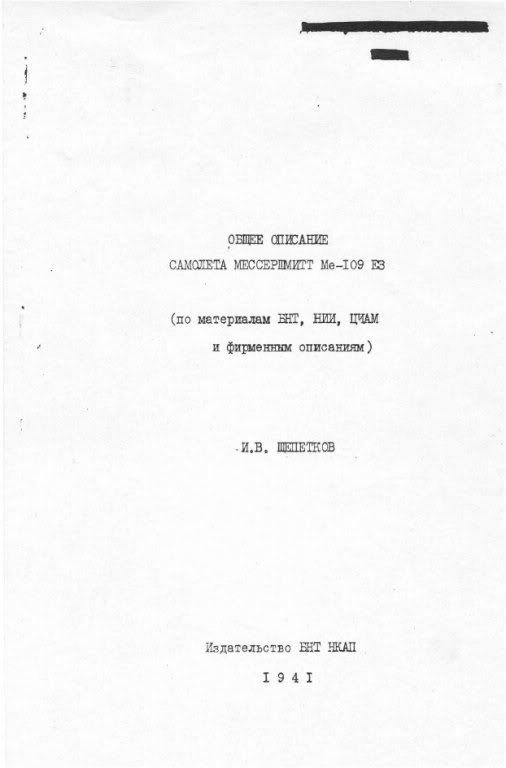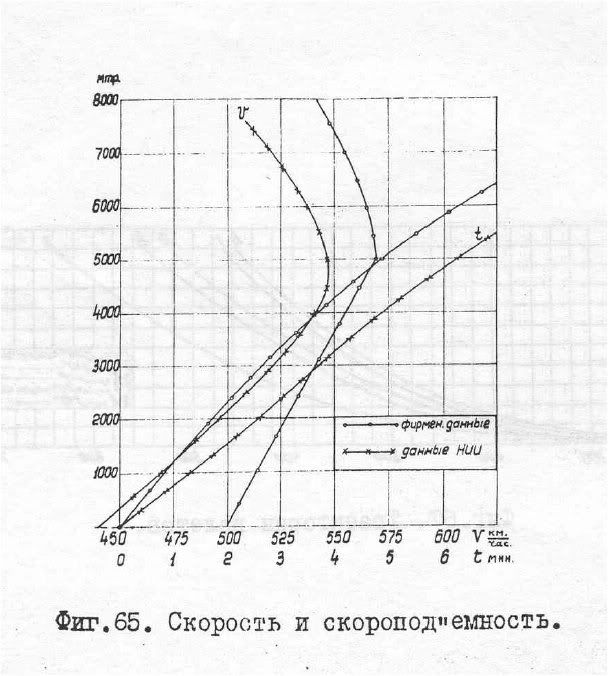
 |
|
#21
|
|||
|
|||
|
LoL Everyones talking about top speeds, and Alt speeds ... Most people is using a test from other people and countries. That would fuel up a 109 take it up and see.. One of the most major factors left out was the use of Synthetic fuel that the Germans used. And American testing on German Aircraft. The American fuel which had a higher octane And had a great affect on speeds even more with supercharged planes Yet no one has talked about it just lines from other websites ..and those don't have which fuel was used on the test
Last edited by Timberwolf; 05-20-2012 at 07:51 PM. |
|
#22
|
|||
|
|||
|
Quote:
But perso I became allergic to all fuel's grade discussion with month arguing my best (with honesty) on the recently closed thread abt 100oct fuel |
|
#23
|
||||||||||||||||
|
||||||||||||||||
|
First, thank you for putting time in an obviously well thought out and coherent posts. Its a rare thing to see something like that on this board.
And now the barrage Quote:
Quote:
Quote:
Quote:
The important difference between Test 1 and Test 2/3 however is that while Test 1 is a performance test, and wanted to obtain accurate and absolute performance figures for the whole altitude spectrum, Test 2/3 were never intended to do the same. Test 2/3 were about finding the relative difference in performance in various aerodynamic conditions, presumably for seeking out the viability for future improvements (guns installed not installed etc.). All they wanted to gain is relative speed difference on the same plane to get an idea how much drag penalty these items induce. They were never meant to be representative performance flight trials. Quote:
Quote:
This is however a false assumption, as apart from controlling the supercharger, the DB engines had automatic boost controller as the RR engines did. In fact those engines that did not and the throttle was controlled manually were the exception. The hydraulic coupling provided the apprx. amount of boost needed, usually a bit more just to make sure, but fine adjustment was made by the throttle on the DB, which limited boost to the nominal pressures. Quote:
The second variable oil supply pump was only engaged at around 1.5-2 km altitude, above which the s/c output was contiously varied indeed - but not before that. This characteristic is clearly visible on DB power curves (straight power line between 0-2km). Quote:
Also it not only true for the Swiss testing (conditions completely unknown, but the lack of any curvature and good agreement between V15a Hoehenlader results also suggest this), but also to the two other German 109E flight tests. Quote:
Quote:
In short, the DB 60x series supercharger's first speed is ALWAYS fixed ratio, yet as opposed what you speculate, that the engine boost would decrease above sea level, it doesn't. On the contrary, power curves show it increases, peaking out at about 2000m, where the variable oil pump is engaged by barometric control. The reason is simple, when the slippage is at 30% (first s/c or 'Bodenlader') the supercharger compresses far more air (at around 1.6-1.7ata) than the necessary (1.3-1.45 ata), but the boost regulator only feds the engine with the necessary amount. This also means that at near SL the air is much more compressed, than a bit above, and as a result heats up more, decreasing output a bit. The actual pressures can be seen on this graph on a 109G. See the difference between Ladedruck (boost) and Geblaesedruck (which is the pressure in the supercharger itself): http://kurfurst.org/Performance_test...les/blatt6.jpg Quote:
What will simply happen is that the supercharger will develop at low altitudes a lot more pressure than needed, and before it enters the engine it will be throttled down to the nominal levels. The whole 'not possible because of the use of a hydraulic coupling' is nonsense. The only thing the hydraulic coupling change is the gear ratio of the supercharger, between 7.2:1 and 10.2:1, just like a mechanical gear in a more simple two-speed supercharger would do, the only difference is that the hydraulic is capable of any intermediate interval, ie. any ratio between 7.2:1 and 10.2:1, the mechanical linkage is not. Quote:
Furthermore Rechlin's much later trials with G-6 show exactly the same operation of high/low supercharger gears. Unless you want to tell me that hydraulic coupling was also missing on the DB 605A/109G-6... http://kurfurst.org/Performance_test...G-6_DB605A.jpg Quote:
Problem is that all of the above runs aground since the report clearly states the aircraft doing 493 km/h with 951 PS power, at 1.31ata with the supposedly more powerful engine.* For comparison the DB 601A-1 static output at SL was 990 PS at 1.3ata, and that of the 601Aa at 1.35ata was 1045 PS. In short the tested aircraft's propeller had exactly the same power as serial production machines, regardless of what happened in the engine before that. *The results were later corrected to 996 PS, the nominal output in flight. I am not aware of other explanations of underperformance in the other actual 109E flight tests. Quote:
2, The guarantee was for 1.35ata performance, +/- 5% for 500 km/h. That means that anything between 475 km/h and 525/h is OK for acceptance, for an Emil with DB 601Aa and operating at 1.35ata. Compared to that, it would the French got around 480 km/h at 1.3ata from a crashed aircraft and the Germans iirc 474 km/h for another test machine, again at 1.3ata. In both cases the nominal output of the engines was at least 55 PS less than that of the Aa engine. I would say serial production machines stack up really well to the specs. Quote:
Quote:
How are uncorrected 1.3ata tests are in connection with 1.35ata performance?
__________________
Il-2Bugtracker: Feature #200: Missing 100 octane subtypes of Bf 109E and Bf 110C http://www.il2bugtracker.com/issues/200 Il-2Bugtracker: Bug #415: Spitfire Mk I, Ia, and Mk II: Stability and Control http://www.il2bugtracker.com/issues/415 Kurfürst - Your resource site on Bf 109 performance! http://kurfurst.org 
Last edited by Kurfürst; 05-20-2012 at 08:21 PM. |
|
#24
|
|||||
|
|||||
|
Dear Kurfurst and others
Thank you for the response. That was exactly the critique I was looking for. Quote:
I would say however that provided the rated conditions are known, the "control" speed (i.e without configuration changes, not that this changed anything) should be considered in the data set in light of stated boost (1.30ata). But I can't agree that (lack of) engine power correction is a good explanation of low altitude underperformance in multiple tests (i.e. other than test 1). It suggests that 109E underperformance due to DB601 defficiency is typical and might be a factor in actual production aircraft (unlikely). In this case the 109s underperform but it is a DB rather than Me problem. Quote:
This certainly knocks over one of the legs of my argument (but not all This unfortunately gets us back to the original problem of a somewhat large range of possible low altitude 109 performance, with reasonable grounds (in my opinion) to argue both ends of the spectrum: * A guaranteed technical specification * A prototype that meets the spec provided engine power is corrected * Multiple flight tests (with boost variability) that are specification "passes" for max speed but around the pass/fail level at sea level speed. Some plausible but unproveable hypotheses are presented for underperformance in these real tests. Quote:
Quote:
Well, I admit that was rather sloppy, but we do have to deal with a set of tests with varying boost levels SL speed 465-480kmh at 1.25-1.3ata Top speed 547-565kmh at 1.25-1.3ata With a theoretical correction to 1.35 ata, I would estimate we are looking at a low specification "pass" at SL and close to bang on spec at height. Quote:
Based on this all, I would suggest that "typical" series 109Es * Performed close (maybe a little below) to their max speed average spec at 5000m (572 kmh TAS) * Performed close (but above) their minimum "pass" rate at sea level (475kmh IAS/TAS) Based on the 109G test data I would hypothesise that slight deviations under sea level minimum spec might be possible in individual "passed" aircraft (provided they passed the max speed test at height). From the CloD point of view we are perhaps over-focussed on the sea level performance. We spend a lot of time chasing and being chased at sea level in 1v1 battles, and when we "test" the aircraft we skim the waves in a way no actual test pilot would care to do on a routine basis camber |
|
#25
|
|||
|
|||
|
Some more info.
I have a Russian (What I think) is an Engineering and Performance apprasial on the BF109E3 done in 1941. Its 117 pages and very detailed but being written in Cyrillic is hard going. Evident in the document the E3 has Auto Prop pitch.  Buried in the document for what its worth is this graph:  Looks like two sets of TAS v Altitude lines for different conditions and two sets of Time to height lines "t". Be nice if a Russian speaker could repost the graph with the legends to the lines and the statement at the bottom in English. Last edited by IvanK; 05-21-2012 at 07:01 AM. |
|
#26
|
||||
|
||||
|
This is level speed (TAS vs Altitude) and climbing (Climb time vs Altitude) chart. Units: m, km/h, min. I will look at this book later for translating the legends, because these are abbreviations in chart.
EDIT #1: curves with bubbles - "Manufacturer data", curves with crosses - "Data of Research institute (НИИ - Научно-исследовательский институт)" EDIT #2: Tests were done at 2400RPM/1.35ATA. This is true for climbing test only until 5 minute mark, after which lower power setting was used. Last edited by ZaltysZ; 05-21-2012 at 08:17 AM. |
|
#27
|
|||
|
|||
|
IvanK,
Nice document. That is clearly the full appraisal that goes with Test 7 (Russian captured E3) in the original thread post. The curve matches pretty much exactly. The Russians clearly took the Messerchmitt guaranteed 109 performance seriously.. they have plotted it alongside. If I was shopping for a secondhand 109E for the local pylon races I think I would give that one a miss, it really seems a bit of a lemon. Cheers, camber |
|
#28
|
|||
|
|||
|
In what conditions were all these aircraft captured? I remember reading somewhere the 109 needed a service after 10 flying hours.
|
|
#29
|
|||
|
|||
|
Is it still a discussion about correcting performance in the game or do we fight the real BOB again?
If it's still about the game, then I doubt that taking some perf. tests from captured aircrafts will get us very far. It's pointless to discuss about taking such data for the FM. Why? Simply because it would be impossible to estimate the average performance of several thousands of planes at a given time in a given battle. Especially when you don't have a representativ number of tests. How can it be justified to change the top speed of the 109 based on a few testflights from foreign countrys? And if we would go down that road, how about low production quality in late war scenarios? Or other factors who would affect performance? IMO the only way to have acceptable performance data is to take the theoretical values which should be reached by production aircrafts under normal conditions. Everything else is just BS. |
|
#30
|
|||
|
|||
|
Quote:
Quote:
Quote:
camber |
 |
|
|